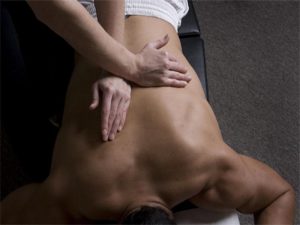 A chiropractic adjustment, also known as chiropractic manipulation, manual manipulation, or spinal manipulation, is the primary chiropractic treatment method for back pain.
A chiropractic adjustment, also known as chiropractic manipulation, manual manipulation, or spinal manipulation, is the primary chiropractic treatment method for back pain.
Spinal manipulation is relieves pressure on joints, reduces inflammation, and improves nerve function. It has been a trusted form of treatment since the ancient Greek Hippocrates documented manipulative techniques in his writings back in 1500 B.C. Today, spinal manipulation is used to treat conditions such as allergies, menstrual cramps and headaches.
How Does Spinal Manipulation Work?
There are well over 100 types of adjustment techniques used by chiropractors throughout the world. Some practitioners may use force and twisting, while other techniques are more gentle. Regardless of how they are performed, these techniques are intended to restore or enhance joint function with the objectives of reducing pain and resolving joint inflammation.
When vertebrae shift out of place, there is an overall systemic response from the muscular system to the central nervous system. Without proper alignment and flow, our nerves, our immune system, and our minds cannot function at their highest peak.
Overall, spinal adjustments and manipulations are an excellent way to keep the body functioning at its highest level without any discomfort. When the body is adequately aligned, it becomes able to respond and perform as it was built to do.
The basics of Chiropractic care come from receiving an adjustment, or a manipulation. In order to reduce the subluxation of the vertebrae, Dr. Gray manipulates the individual vertebra back into its natural alignment. The end result often includes increased motion, minimizing nerve irritation and improved function.
Dr. Gray applies a swift movement, short lever arm thrust to the vertebra. Often times you’ll actually hear a popping sound, which is totally normal and healthy. The body releases gas, including oxygen, nitrogen and carbon dioxide, this is called cavitation. He releases the pressure and most patients comment on the relief that comes. Periodically patients experience mild discomfort, usually caused from muscle tensing during the adjustment, or spasms in the muscles.
Sometimes an audible sound is not heard. Caused typically by significant muscle splinting or inadequate relaxation by the patient. If this occurs, ice, rest and electrical stimulation, as well as massage before adjustments will help expedite the healing process.